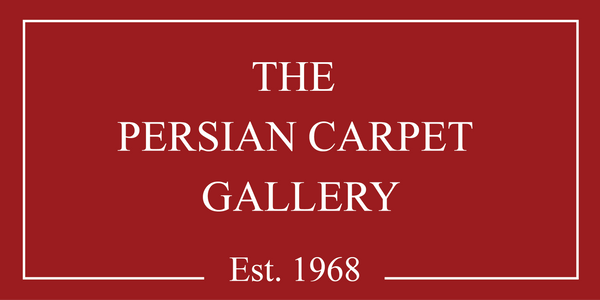Blogs
Silk Kilim: 17th-Century Persian Masterpiece at the Textile Museum, Washington, D.C.
The Silk Kilim at the Textile Museum, Washington, D.C., is a rare 17th-century Persian tapestry-woven rug from Kashan or Isfahan. Made with a silk warp and silk and gold/silver weft, it showcases exceptional craftsmanship with 112 warp threads per 10 cm. Its intricate design features a phoenix and dragon in combat, cranes in flight, and mythical kylins, alongside various animals in its borders. Similar pieces exist in Berlin's Islamisches Museum and the Metropolitan Museum of Art, New York. Textile expert M.S. Dimand attributes it to an Isfahan workshop, highlighting the rich Persian weaving heritage.
Silk Carpet with Arabesques in The Victoria and Albert Museum in London
The Silk Carpet with Arabesques, originating from Central Persia in the early 17th century, is a stunning example of Safavid-era craftsmanship. Currently housed in the Victoria and Albert Museum, London, this luxurious carpet features 400,000 knots per square meter, with a silk warp, silk weft, and a silk pile enriched with gold and silver threads.
Belonging to the ‘Polonaise’ carpet group, its name stems from a historical misattribution in 1878, when several Persian rugs from the Polish Prince Czartoryski’s collection were mistakenly believed to be of Polish origin. Although scholars corrected this by 1891, the term ‘Polonaise’ persists.
Experts debate its precise origin, with Arthur Upham Pope suggesting it was woven in Joshagan, though its design sets it apart from other carpets in the same category. This masterpiece remains a testament to the artistic and technical brilliance of 17th-century Persian weavers.
The Majestic Hunting Carpet of the Österreichisches Museum
The Hunting Carpet, woven in the Imperial Factory of Central Persia in the 16th century, is a breathtaking example of Persian craftsmanship. Now housed in the Österreichisches Museum für angewandte Kunst (MAK) in Vienna, this luxurious silk carpet features an extraordinary 1,274,000 knots per square meter, making it one of the most finely woven carpets in history.
Its intricate design showcases a central star motif, surrounded by floral patterns, mythical creatures, and an elaborate hunting scene. Persian noblemen, armed with bows, lances, sabers, and clubs, pursue 157 wild animals, including lions, panthers, antelopes, and boars, all set against a rich salmon-colored background. The border features a frieze of flowers, birds, and human figures, symbolizing continuity and tradition.
Believed to be crafted during the reign of Shah Tahmasp I (1524–1576) and designed by Sultan Mohammed, the carpet was possibly taken as booty by Holy Roman Emperor Leopold I after the failed Siege of Vienna in 1683. Its exquisite craftsmanship and historical significance make it one of the world's most celebrated Persian carpets.
The Prayer Rug at The Metropolitan Museum of Art, New York
The 16th-century Persian prayer rug at The Metropolitan Museum of Art, New York, is a masterpiece of Safavid-era craftsmanship. Originating from northwest Persia, it features an intricate cupola-shaped mihrab adorned with palmettes, leaves, flowers, and cloud-bands. Measuring 161 x 105 cm, this rug boasts an astonishing 1,000,000 knots per square meter, showcasing exceptional weaving precision.
Crafted with a light brown cotton warp, natural brown wool weft, and a fine wool pile, it is further enriched with silver-thread brocading wrapped around a silk core, adding a touch of luxury. The rug also features Qur’anic inscriptions in Nasr script, praising Allah, enhancing its spiritual significance.
This historic rug exemplifies the golden age of Persian carpet weaving, blending artistry and devotion, and remains a treasured exhibit at The Met, captivating visitors with its beauty and heritage.
Medallion and Animal Carpet
The Medallion and Animal Carpet, a masterpiece from 16th-century Tabriz in Northwest Persia, reflects the Iranian concept of Paradise. Housed in the Musée des Arts Décoratifs in Paris, this fragment features a lush garden landscape with blossoming trees, flowing streams, and diverse animals, symbolizing harmony and abundance. Made with Persian knots, yellow silk warp, silk weft, and a wool pile, it exemplifies the refined craftsmanship of the Safavid era. The other half of this rug is preserved in Cracow, Poland, while a larger, more intricate example exists in the Los Angeles County Museum of Art. These rugs are cultural artifacts that celebrate Persian artistry and spiritual symbolism.
Knotting: The Art of Carpet Weaving
Carpet-making begins with evenly tensioned warp threads on a loom for symmetry. A selvedge, woven with weft threads, forms a firm edge for knotting.
The two main knot types are:
- Ghiordes (Turkish Knot): Knots wrap two warp threads, followed by weft compression and trimming to create the pile.
- Senneh (Persian Knot): Wool wraps one warp thread, looping behind another for intricate designs.
These refined techniques ensure Persian carpets are durable and exquisite.







